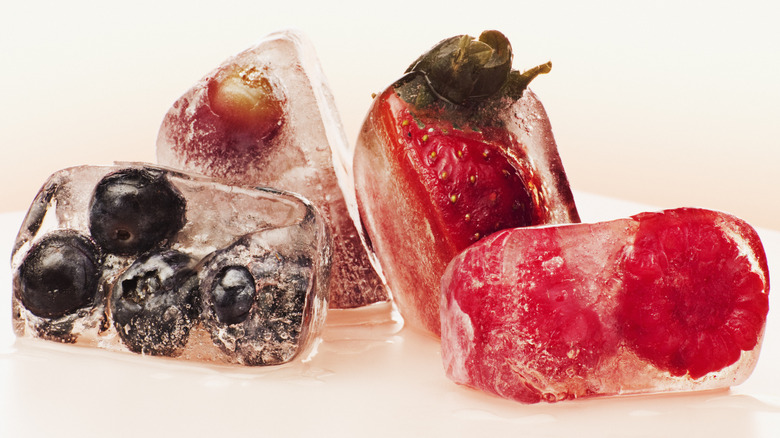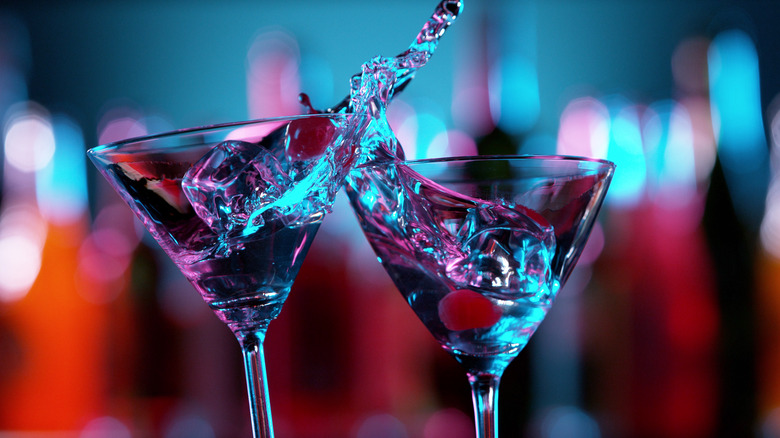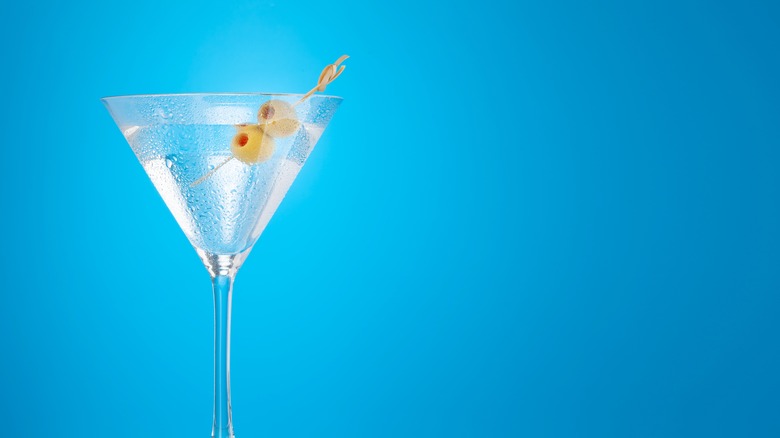Sous Pression: The Flavor-Freezing Inverse To Sous Vide
Despite the fact that chefs are often working with ingredients and techniques that have been around for an incredibly long time, innovation is happening constantly. For example, the practice of chaunk, which has its origins in India and the Middle East, involves cooking spices in fat, allowing their flavors to further develop. More recently, scientists developed an anti-griddle, a small device that flash freezes your food with liquid nitrogen.
A similar principle underlies a new trend in the dairy dessert world — just ask Sub Zero Nitrogen Ice Cream or Lulu's Ice Cream, two companies that have dabbled in this futuristic field of sweet science. In a similar vein, one intrepid mixologist has developed a method that uses freezing temperatures to give classic cocktails a fruit infusion.
Sous pression proves pressure makes perfect
Iain McPherson was born to one day ply his wares in the food and beverage industry — his father was involved in ice cream, and he himself attended two separate ice cream institutions. So one might've guessed that he'd wind up concocting new dairy desserts. However, those of us who prefer shots to sweet treats can rejoice over McPherson's decision to transition into the bartending and mixology space.
Since deciding to become a cocktail purveyor, McPherson has opened several bars, including Panda & Sons and Hoot The Redeemer. He has also pioneered new techniques in the field of mixology, like switching, wherein the water is removed from a bottle of spirits and replaced with a different liquid.
His most recent innovation is sous pression. This process can be thought of as a reversal of sous vide cooking, a newer technique that involves vacuum-sealing meat and slow-cooking it in steaming water. Like its spiritual successor, sous pression also needs pressure to work, but its temperature element is freezing cold — not scalding hot.
What exactly is sous pression?
It's fair to say that Iain McPherson has taken cocktail creation far beyond the simple question of shaken or stirred. A description of sous pression sounds like something out of a science fiction novel.
First, 2-liter steel beer receptacles are filled with a premixed cocktail, as well as a selection of fruits and herbs catered to the respective drink's flavor profile. After the mixture rests for a day and a half, it is flash-frozen at -30 degrees Celsius. In an interview with Punch Drink, McPherson explains that the rapid freezing makes the cocktail expand. As the liquid has nowhere to go, it pushes itself into the fruit and herbs, forcing out all of their flavor. The resulting drink, McPherson says, has a smoother finish and is absolutely bursting with fruit flavor.
The science of sous pression is still in its infancy. Currently, McPherson has primarily used the technique on classic cocktails in order to gently introduce customers to his mixological masterstroke.


